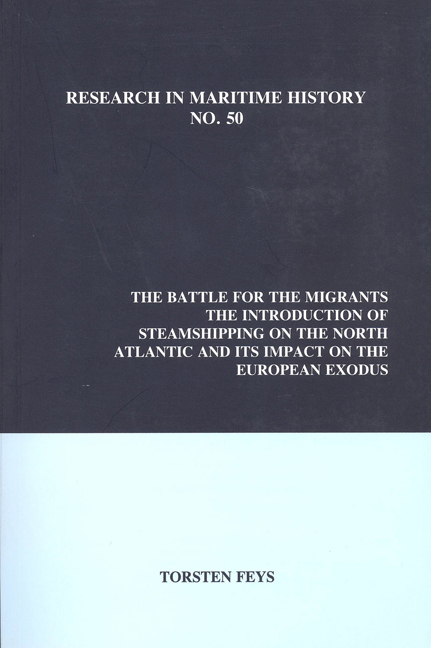
-
- This book is no longer available to purchase from Cambridge Core
- Publisher:
- Liverpool University Press
- Online publication date:
- April 2018
- Print publication year:
- 2012
- Online ISBN:
- 9781786948854
- Series:
- Research in Maritime History

This book approaches the well-documented study of European mass migration to the United States of America from the viewpoint of mass migration as a business venture. The overall purpose is to demonstrate that maritime and migration histories are interlinked and dependent on a deeper understanding of the social, economic, and political factors at work in the nineteenth century Atlantic community. It centres on both the evolution of the port of Rotterdam as a migration gateway, and the crucial role of the Holland-America line as a regulator of the North American passenger trade. The first part of the book explores the simultaneous rise of transatlantic mass migration and long-distance steamshipping between 1830 to 1870. The second part, divided into five chapters, explores how mass migration became a big business between 1870 and 1914, and scrutinises how steamship companies organised and provided initiatives for transoceanic migration, plus the role of shipping agents and agent-networks, and how passenger services were constructed within transatlantic networks. Over the course of the text it becomes increasingly clear that by approaching mass migration as a trade issue, the role of steamship companies in the facilitation of transatlantic migration is rendered both intrinsic and pivotal. It consists of an introduction containing contextual information, two sections providing historical overviews, five chapters exploring different aspects of the shipping industry's response to mass migration, conclusion, bibliography, and six appendices of passenger, destination, agent, and advertising statistics.
 Loading metrics...
Loading metrics...
* Views captured on Cambridge Core between #date#. This data will be updated every 24 hours.
Usage data cannot currently be displayed.